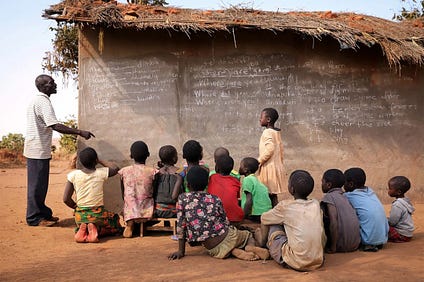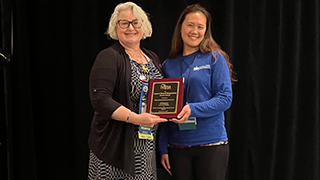Cut in global funding in education – New Age BD

Addressing Learning Poverty in Bangladesh: A Strategy Aligned with Sustainable Development Goals
Introduction: The Challenge to Achieving SDG 4
Despite significant national investment and international support, a substantial number of underprivileged children in Bangladesh face “learning poverty,” characterized by a failure to acquire foundational literacy and numeracy skills. This situation presents a direct challenge to the achievement of Sustainable Development Goal 4 (Quality Education), which aims to ensure inclusive and equitable quality education for all. While programs like the Primary Education Development Programme (PEDP) have been implemented, desired benchmarks have not been met. A significant portion of this investment is debt-financed, increasing national liabilities without yielding commensurate results in learning outcomes.
The Compounding Crisis: Financial Constraints and Global Headwinds
Bangladesh, along with other developing nations, confronts a multi-faceted crisis that undermines educational progress:
- A global reduction in education aid, which disproportionately affects nations already grappling with learning poverty.
- A weakening domestic education infrastructure.
- Persistent gaps in foundational learning that threaten to widen.
This decline in international support necessitates a strategic shift towards low-cost, high-impact interventions that can advance foundational learning within a constrained financial environment, aligning with the principles of sustainable development.
Strategic Recommendations for Systemic Reform
A series of locally implementable measures are proposed to address these challenges and accelerate progress towards SDG 4 and related goals.
-
Fostering Multi-Stakeholder Partnerships (SDG 17)
Leverage partnerships with corporate entities and non-governmental organisations to establish community-based catch-up programmes. These initiatives should target underprivileged children, school dropouts, and children with disabilities, thereby promoting the inclusivity central to SDG 4 and SDG 10 (Reduced Inequalities). Programmes can utilize no-cost community venues and be facilitated by retired teachers or student volunteers, supported by corporate sponsorship.
-
Integrating Education and Workforce Development (SDG 8)
Encourage corporations to operate learning centres for out-of-school children, combining foundational education with tailored technical training relevant to industry needs. This model, framed within Corporate Social Responsibility (CSR), can create pathways to employment and economic mobility, directly supporting SDG 8 (Decent Work and Economic Growth) and SDG 1 (No Poverty), while adhering to child protection standards.
-
Strengthening the Teaching Profession (SDG 4.c)
Overhaul teacher recruitment policies to ensure a committed and qualified workforce. Eligibility for primary teaching positions should be restricted to candidates with pre-service training in primary education. This requires a comprehensive reform of the curriculum and training frameworks across all Primary Teachers’ Training Institutes (PTIs) and universities offering education degrees to build a professional cadre dedicated to quality education.
-
Implementing Data-Driven Accountability
Institute mandatory annual baseline and endline assessments of foundational literacy and numeracy skills in every primary school. Teachers must be trained to administer these assessments and use the data to provide targeted remedial support. This data-driven approach is crucial for monitoring progress towards SDG 4.1 and must be paired with an equitable distribution of teachers to ensure no school is left behind.
-
Establishing a National School Performance Framework
Introduce a national grading system for primary schools based on proficiency data in foundational skills. Headteachers and education officials at all levels must be held accountable for ensuring measurable improvement in underperforming schools. This accountability mechanism is contingent upon the prior provision of adequate resources and equitable staffing.
-
Ensuring Coherence in Reform Efforts
Avoid duplication and reinforce critical reforms, particularly those concerning teacher commitment, pre-service training, and curriculum standardization. These elements are foundational prerequisites for any sustainable transformation in learning outcomes and are central to achieving the teacher-focused targets of SDG 4.
-
Promoting Good Governance and Anti-Corruption (SDG 16)
Address rampant corruption and the misuse of public funds within the education sector. Achieving SDG 16 (Peace, Justice and Strong Institutions) is integral to the success of all other goals. Stringent financial oversight, empowered monitoring bodies, and transparent audit trails must be mandated to end impunity and ensure that resources designated for education reach their intended beneficiaries.
-
Addressing Systemic Resource Gaps
Fill the large number of vacant teaching and supervisory posts without delay, using special recruitment drives for remote areas. The entire system of teacher deployment and transfers must be digitized to eliminate political interference and favouritism, thereby ensuring the equity and transparency required to fulfill the promise of SDG 4.
Conclusion: A Moral and Political Imperative
As global funding models shift, Bangladesh must adopt cost-effective, equity-based strategies that leverage local resources, corporate responsibility, and rigorous accountability. Achieving universal foundational literacy and numeracy is not merely a technical objective but a moral and political commitment to future generations and the fulfillment of the Sustainable Development Goals. Without immediate, targeted, and transparent reform, learning poverty will deepen, undermining national development and progress.
Analysis of Sustainable Development Goals in the Article
1. Which SDGs are addressed or connected to the issues highlighted in the article?
- SDG 4: Quality Education: This is the central theme of the article. The text directly addresses the crisis of ‘learning poverty,’ the lack of ‘foundational literacy and numeracy skills,’ the quality of primary education, teacher training, and the need for inclusive learning opportunities for all children.
- SDG 1: No Poverty: The article links education to broader socio-economic conditions by discussing ‘underprivileged children’ and ‘learning poverty.’ Education is a critical tool for poverty alleviation, and the failure to provide it perpetuates cycles of poverty.
- SDG 10: Reduced Inequalities: The article emphasizes the disproportionate impact of the education crisis on ‘underprivileged children, school dropouts, children with disabilities.’ It calls for ‘equity-based strategies,’ ‘inclusive’ efforts, and an ‘equitable distribution of teachers,’ directly tackling inequalities in educational access and outcomes.
- SDG 16: Peace, Justice and Strong Institutions: The article highlights systemic failures within the education sector, specifically mentioning ‘rampant corruption and misuse of public funds’ and the need to end ‘impunity.’ It calls for ‘stringent financial oversight mechanisms’ and ‘transparent audit trails,’ which are core to building effective and accountable institutions.
- SDG 17: Partnerships for the Goals: The article proposes solutions that rely on collaboration. It explicitly suggests ‘partnerships with corporate entities and willing non-governmental organisations’ and leveraging ‘Corporate Social Responsibility’ to create community-based learning programs, which aligns with the goal of fostering multi-stakeholder partnerships.
2. What specific targets under those SDGs can be identified based on the article’s content?
-
Target 4.1: By 2030, ensure that all girls and boys complete free, equitable and quality primary and secondary education leading to relevant and effective learning outcomes.
- The article’s core focus is on the failure to achieve ‘desired benchmarks’ in primary education, particularly in ‘foundational literacy and numeracy skills,’ which are key learning outcomes mentioned in this target.
-
Target 4.5: By 2030, eliminate gender disparities in education and ensure equal access to all levels of education and vocational training for the vulnerable, including persons with disabilities, indigenous peoples and children in vulnerable situations.
- The article specifically calls for programs targeting ‘underprivileged children, school dropouts, children with disabilities,’ which directly aligns with this target’s focus on ensuring equal access for vulnerable groups.
-
Target 4.c: By 2030, substantially increase the supply of qualified teachers, including through international cooperation for teacher training in developing countries, especially least developed countries and small island developing States.
- The article extensively discusses the need for teacher quality reform, including overhauling ‘recruitment policies,’ ensuring ‘pre-service training in primary education,’ and filling the ‘large number of vacant teaching and supervisory posts.’
-
Target 10.2: By 2030, empower and promote the social, economic and political inclusion of all, irrespective of age, sex, disability, race, ethnicity, origin, religion or economic or other status.
- By advocating for ‘inclusive, qualitative improvements’ and programs for marginalized children, the article aims to foster social inclusion through education, which is a key component of this target.
-
Target 16.5: Substantially reduce corruption and bribery in all their forms.
- The article makes a direct call to action against ‘rampant corruption and misuse of public funds’ and notes that funds are ‘syphoned off or misappropriated through unethical practices,’ which is the exact issue this target seeks to address.
-
Target 17.17: Encourage and promote effective public, public-private and civil society partnerships, building on the experience and resourcing strategies of partnerships.
- The recommendation to leverage ‘partnerships with corporate entities and willing non-governmental organisations’ and use ‘Corporate Social Responsibility’ frameworks is a direct application of this target.
3. Are there any indicators mentioned or implied in the article that can be used to measure progress towards the identified targets?
- Implied Indicator for Target 4.1: The article explicitly calls for ‘nationwide baseline and endline assessments of students’ foundational literacy and numeracy skills’ to be conducted annually. This directly corresponds to measuring the ‘Proportion of children…achieving at least a minimum proficiency level in (i) reading and (ii) mathematics’ (Indicator 4.1.1). The proposed ‘national grading system’ for schools based on this data is also a measurement tool.
- Implied Indicator for Target 4.c: The article points to the need to measure progress by filling the ‘large number of vacant teaching and supervisory posts’ and ensuring teachers have ‘pre-service training.’ This relates to tracking the ‘Proportion of teachers…who have received at least the minimum organized teacher training’ (Indicator 4.c.1) and monitoring teacher vacancy rates, especially in ‘remote and hard-to-reach areas.’
- Implied Indicator for Target 4.5: While no specific number is given, the article implies the need to track the inclusion of vulnerable groups. Progress would be measured by the number of ‘underprivileged children, school dropouts, children with disabilities’ enrolled in and benefiting from the proposed ‘community-based catch-up programmes.’ This aligns with the concept of using parity indices (Indicator 4.5.1) to measure equity.
- Implied Indicator for Target 16.5: The article suggests measuring progress by implementing ‘stringent financial oversight mechanisms’ and ‘transparent audit trails for all major expenditures.’ A key indicator would be the reduction in cases of ‘misappropriated’ funds and the successful prosecution of corruption, thereby ending ‘impunity.’
- Implied Indicator for Target 17.17: Progress can be measured by the number and scale of ‘partnerships with corporate entities and willing non-governmental organisations’ that are established. The number of ‘community-based catch-up programmes’ and corporate-sponsored ‘learning centres’ in operation would serve as a direct indicator of success.
4. Table of SDGs, Targets, and Indicators
| SDGs | Targets | Indicators (Mentioned or Implied in the Article) |
|---|---|---|
| SDG 4: Quality Education | 4.1: Ensure quality primary education with effective learning outcomes. | Annual ‘nationwide baseline and endline assessments of students’ foundational literacy and numeracy skills.’ A ‘national grading system’ for primary schools based on proficiency data. |
| 4.5: Ensure equal access for vulnerable children. | Tracking the number of ‘underprivileged children, school dropouts, children with disabilities’ reached by ‘community-based catch-up programmes.’ | |
| 4.c: Increase the supply of qualified teachers. | Number of ‘vacant teaching and supervisory posts’ filled. Proportion of new teachers with mandatory ‘pre-service training.’ | |
| SDG 10: Reduced Inequalities | 10.2: Promote social inclusion of all. | Implementation of an ‘equitable distribution of teachers’ to ensure no school is under-resourced. Success of programs targeting marginalized children. |
| SDG 16: Peace, Justice and Strong Institutions | 16.5: Substantially reduce corruption. | Implementation of ‘stringent financial oversight mechanisms’ and ‘transparent audit trails.’ Reduction in ‘misappropriated’ public funds. |
| SDG 17: Partnerships for the Goals | 17.17: Encourage effective public-private and civil society partnerships. | Number of ‘partnerships with corporate entities and willing non-governmental organisations’ formed. Number of ‘learning centres’ operated under Corporate Social Responsibility. |
Source: newagebd.net

What is Your Reaction?
 Like
0
Like
0
 Dislike
0
Dislike
0
 Love
0
Love
0
 Funny
0
Funny
0
 Angry
0
Angry
0
 Sad
0
Sad
0
 Wow
0
Wow
0



























;Resize=805#)




















































